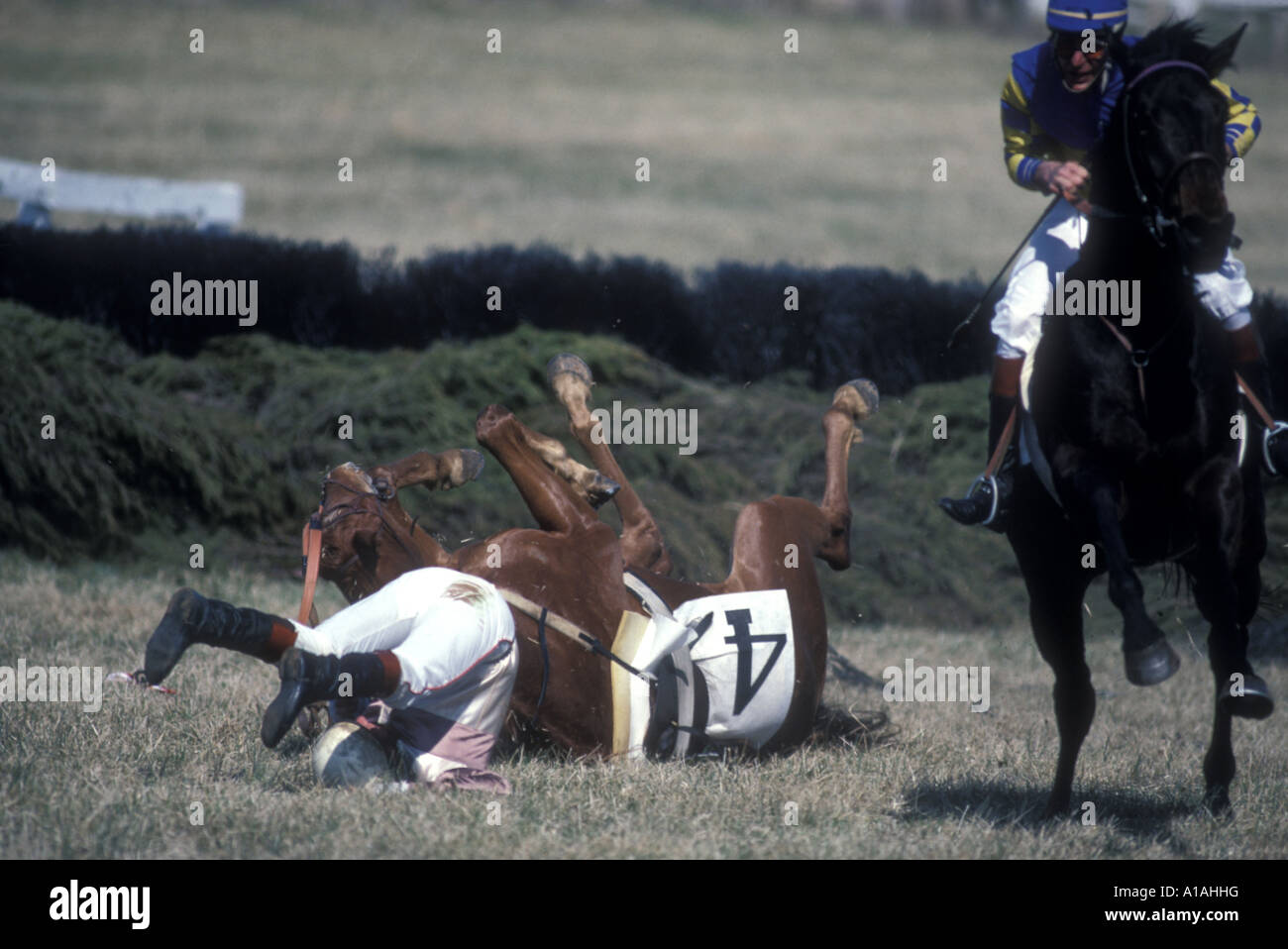Preventing Steeplechase Falls: Men’s Steeplechase Fall

Steeplechase, a demanding and exciting event, requires exceptional athleticism and technical proficiency. While the thrill of the race is undeniable, it’s crucial to prioritize safety and minimize the risk of falls. This section delves into strategies and best practices that can help athletes navigate the barriers and water jumps safely, ensuring a successful and injury-free experience.
Training Regimen for Preventing Falls, Men’s steeplechase fall
A well-structured training regimen plays a vital role in preventing steeplechase falls. It should encompass proper technique, strength and conditioning, and risk management strategies.
- Technique Refinement: Focus on developing precise footwork and body positioning, especially when approaching and clearing the barriers and water jumps. This involves mastering the proper stride length, hurdle clearance technique, and landing mechanics. Regular practice and feedback from coaches are essential for refining technique and reducing the risk of falls.
- Strength and Conditioning: A comprehensive strength and conditioning program is crucial for building the necessary strength, power, and endurance to withstand the demands of the steeplechase. Focus on exercises that target the lower body, core, and upper body, including plyometrics, weight training, and agility drills. This will enhance muscle strength, balance, and coordination, minimizing the risk of falls due to fatigue or muscle imbalances.
- Risk Management Strategies: Incorporate specific drills and training scenarios that simulate the challenges of the steeplechase course. This includes practicing hurdle clearance under varying conditions, simulating water jump entries and exits, and navigating uneven terrain. These drills help athletes develop muscle memory and adapt to unexpected situations, reducing the likelihood of falls during the race.
Factors Contributing to a Safe and Successful Steeplechase Race
Several key factors contribute to a safe and successful steeplechase race, ensuring a positive experience for athletes.
- Course Design: The course design should prioritize safety by ensuring proper barrier spacing, water jump depth and length, and clear landing areas. Well-maintained barriers and water jumps are crucial to prevent falls due to uneven surfaces or hazardous conditions.
- Weather Conditions: Weather conditions play a significant role in race safety. Athletes should be aware of potential hazards like rain, wind, and slippery surfaces. Proper attire and race strategies should be adjusted accordingly to minimize the risk of falls caused by adverse weather conditions.
- Athlete Preparedness: Adequate preparation is essential for a safe and successful steeplechase race. Athletes should undergo a thorough warm-up routine, including dynamic stretching and light cardio, to prepare their bodies for the demands of the race. This helps improve muscle flexibility, reduce the risk of injury, and enhance overall performance.
Coaching and Athlete Education in Preventing Falls
Coaches and athlete education play a crucial role in preventing steeplechase falls.
- Coach Guidance: Coaches provide valuable guidance on proper technique, training strategies, and risk management. They should monitor athletes’ progress, identify potential weaknesses, and provide personalized feedback to help them improve their performance and reduce the risk of falls.
- Athlete Education: Educating athletes about the specific challenges and risks associated with steeplechase is crucial. This includes understanding the importance of proper technique, recognizing potential hazards, and developing appropriate race strategies.
Best Practices and Safety Protocols for Steeplechase Athletes
A comprehensive approach to safety includes pre-race preparation, race strategies, and post-race recovery.
- Pre-Race Preparation:
- Thorough warm-up: Engage in dynamic stretching and light cardio to prepare muscles for the demands of the race.
- Proper attire: Wear appropriate clothing and footwear that provide support and protection.
- Familiarization with the course: Prior to the race, familiarize yourself with the course layout, barrier placement, and water jump characteristics.
- Race Strategies:
- Pace management: Maintain a consistent pace throughout the race to avoid fatigue and potential falls.
- Barrier clearance technique: Use proper technique when approaching and clearing the barriers to minimize the risk of falls.
- Water jump strategy: Approach the water jump with confidence, maintain a steady pace, and use proper entry and exit techniques.
- Post-Race Recovery:
- Cool-down: Engage in light stretching and walking to help your body recover from the race.
- Hydration: Replenish fluids lost during the race to prevent dehydration.
- Nutrition: Consume a balanced meal to replenish energy stores and support muscle recovery.
Watching a men’s steeplechase fall is like a comedy sketch gone wrong – a mix of awkward tumbles and frustrated groans. But then you see someone like Nina Kennedy soaring over the bar, and you realize that even with the occasional mishap, athletics is a spectacle of sheer strength and grace.
So, the next time you see a steeplechase fall, remember that it’s all part of the thrill of the sport, and maybe even a little bit funny.
Imagine the heart-stopping moment a runner stumbles over a water jump in a men’s steeplechase, sending a ripple of gasps through the crowd. It’s a moment of vulnerability, reminding us that even the most skilled athletes can face a fall.
But imagine a steeplechase with a different kind of hurdle – horses! The Rooks Steeplechase is a thrilling spectacle of equestrian prowess, where riders navigate a course filled with jumps and obstacles, testing both their own and their horse’s agility.
Just like in a men’s steeplechase, the Rooks Steeplechase offers a glimpse into the precarious nature of competition, where a single misstep can make all the difference.